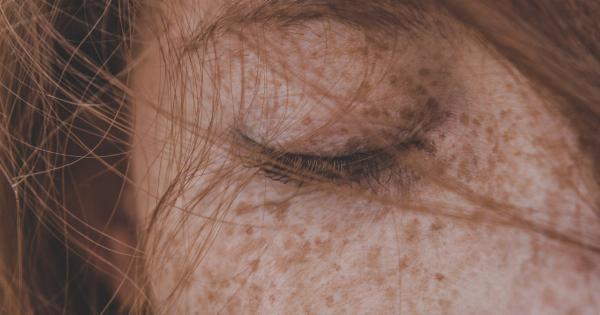Hair loss can be a distressing condition for both men and women. It can have a significant impact on one’s self-esteem and confidence.
Thankfully, advancements in medical technology have paved the way for effective hair transplant procedures, offering a solution to this problem. Hair transplantation is not just a medical procedure but an art form that requires skill, precision, and aesthetic sensibility.
In this article, we will explore the art of hair transplantation and the triptych of success that contributes to its effectiveness.
The Science Behind Hair Transplantation
Before delving into the artistic aspect of hair transplantation, it is crucial to understand the scientific foundation on which it is based.
Hair transplantation involves the extraction of hair follicles from a donor area, typically the back or sides of the head, and their transplantation to the recipient area, where hair loss has occurred. The procedure is performed under local anesthesia, ensuring minimal discomfort for the patient.
The Role of Surgical Expertise
The success of a hair transplantation procedure greatly depends on the surgical expertise of the medical team involved. Trained surgeons with experience in aesthetic procedures play a crucial role in ensuring optimal outcomes.
Their expertise enables them to carefully extract and transplant hair follicles, taking into consideration factors such as graft survival, angle, and direction of hair growth.
The Aesthetic Aspect
While the science of hair transplantation forms the foundation, the artistic aspect brings life and naturalness to the final result. A skilled hair transplant surgeon must possess an artistic eye and an understanding of facial aesthetics.
They consider factors such as facial symmetry, hairline design, and overall harmony to create natural-looking results that seamlessly blend with the patient’s appearance.
Customized Approach for Each Patient
Every individual is unique, and their hair loss pattern is equally distinct. This calls for a customized approach for each patient. A successful hair transplantation procedure is not a one-size-fits-all solution.
The surgeon must evaluate the patient’s specific needs, hair quality, and hair loss pattern to develop a personalized treatment plan. This tailored approach ensures the most satisfactory and natural-looking results.
Artistry in Hairline Design
The hairline is perhaps the most critical aspect of a hair transplantation procedure, as it frames the face and defines a person’s appearance. Achieving a natural-looking hairline requires artistic vision and meticulous planning.
The surgeon must consider factors such as the patient’s age, facial structure, and gender to create a hairline that complements their features. Taking into account factors such as hair density, direction, and angle, the surgeon meticulously places each graft to create a hairline that appears as if it has grown naturally.
Creating Density and Fullness
Another artful aspect of hair transplantation is the creation of density and fullness in areas of hair loss. A skilled surgeon strategically places each graft to ensure a natural distribution that mimics the patient’s original hair pattern.
By recreating density in a way that complements the patient’s appearance, the surgeon can restore a fuller head of hair and enhance their overall aesthetic appeal.
Advanced Techniques and Instrumentation
The art of hair transplantation has benefited greatly from advancements in technology and instrumentation.
Innovative techniques such as Follicular Unit Extraction (FUE) and Direct Hair Implantation (DHI) have revolutionized the field, allowing for more precise and efficient procedures. These techniques minimize scarring, increase graft survival rate, and enhance the overall patient experience, further elevating the artistry involved in hair transplantation.
Post-Procedure Care and Maintenance
The success of a hair transplantation procedure does not end with the surgery itself. Adequate post-procedure care and maintenance are vital to ensure long-term success.
Patients must follow the instructions provided by their surgeon, including proper cleansing, medication application, and regular follow-up visits. This level of care helps maximize graft survival and promotes healthy hair growth, contributing to the overall success of the transplant.
The Emotional Impact
While the physical transformation resulting from hair transplantation is undoubtedly significant, the emotional impact should not be underestimated.
Restoring one’s hair can have a profound effect on self-confidence, self-esteem, and overall well-being. This emotional aspect further emphasizes the importance of both the scientific and artistic elements of hair transplantation.
Continuing Advancements in Hair Transplantation
The art of hair transplantation continues to evolve as technology advances and new techniques emerge. Surgeons and researchers consistently strive for better outcomes and enhanced patient satisfaction.
The combination of scientific knowledge and artistic ability ensures that the field of hair transplantation will continue to flourish, offering hope to those experiencing hair loss.
The Triptych of Success
The art of hair transplantation is a triptych of surgical expertise, aesthetic sensibility, and personalized care. Each element plays a vital role in the success of the procedure and the satisfaction of the patient.
From the scientific foundation to the artistic vision and the ongoing maintenance, every step in the process contributes to a natural-looking result that enhances the patient’s appearance and well-being.
Conclusion
Hair transplantation is not only a medical procedure but a work of art. The amalgamation of surgical expertise, aesthetic sensibility, and personalized care creates a masterpiece that restores confidence and transforms lives.
The art of hair transplantation continues to push boundaries, offering hope to those in search of a permanent solution to hair loss.






























